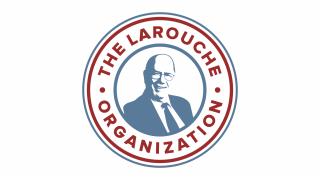Nov. 13—The attempt of the United States and the NATO countries to use central bank money-printing to fund a gigantic new “green” bubble on top of $300 trillion in already unpayable debts, and to “crush” and dismember Russia to kill the resistance to this Malthusian plan, has put the trans-Atlantic financial oligarchy in a huge crisis. The entirety of Europe has been thrown into intolerable 10-20% annual inflation rates and simultaneous economic contraction, causing productive capacities to begin to collapse, and popular resistance to break out in a dozen countries. Whipped by the U.K. and United States, the European countries have all multiplied their defense spending and rushed their best weapons systems to Ukraine, causing more inflation and attacking their own economies’ productivity.
Now the about-face of those trans-Atlantic central banks, from printing money to rapidly raising interest rates, has put the developing nations in an existential crisis of austerity, lack of medicines, jobs, electricity, water, food shortages—and threatened them with ungovernability. This policy of the City of London-Wall Street oligarchy is aimed above all at China. Not only must the nations refuse an anti-Russia, anti-China unipolar bloc, they must build a new international economic architecture with just those nations and others in the BRICS, the Shanghai Cooperation Organization, and Eurasian Economic Union.
Helga Zepp-LaRouche’s Schiller Institute is their obvious and increasingly recognized leading force to do that. The name and genius of Lyndon LaRouche is breaking out of the Promethean captivity the oligarchical Zeus thought it had imposed on him forever.
Helga Zepp-LaRouche’s article, “The Role of the Non-Aligned Movement in a New Paradigm in International Relations,” published in the book of the Nov. 7-14, 2022 Bandung Spirit conference in Indonesia at which she spoke online, included this urgent proposal:
“It is therefore completely legitimate and appropriate, that the NAM countries speak with one voice at the next occasion, at the G20 conference in Indonesia in November, (or at an extraordinary session of the UNGA, if called on an emergency basis), and that they demand a new security and economic architecture, which takes the interest of every country into account.
“The authority for the NAM to take a more active role in shaping the world order comes from the lessons of the experience of its history. The Bandung Conference established the Pancheel, the five principles of peaceful coexistence, and subsequent conferences attempted to maintain that lofty spirit. But it was at the conference in Colombo, Sri Lanka, in 1976, that the NAM came closest to the formulation of what that new order should look like economically. Mrs. Indira Gandhi presented the demands, which then were incorporated in the final resolution, namely:
“1. suspension of debt payment for the poorest countries;
“2. a new universal monetary system to replace the World Bank and the International Monetary Fund;
“3. the creation of a new credit system, which was supposed to be linked to global development;
“4. triangular trade agreements between the developing sector, the socialist states and the OECD countries.
“This resolution was almost identical with the proposal for an International Development Bank, IDB, which the American statesmen and economist Lyndon LaRouche had made one year earlier, i.e., to replace the IMF with a new credit system in order to facilitate global development.”
And in the same article she re-emphasized:
“The new credit system must provide long-term, low-interest loans, which must be dedicated to investments in basic infrastructure, agriculture and industry, with the aim of increasing the productivity of the physical economy in each country. What constitutes such a productive investment and what does not, should be determined by the scientific principles of physical economy as they were developed by American economist Lyndon LaRouche, i.e., they must vector towards an increase in the energy flux density in the production process, leading to an increase in the potential relative population density of each nation.”
The next step in this process of leadership is the Nov. 22 third international seminar of political and social leaders worldwide, convened by the Schiller Institute.






